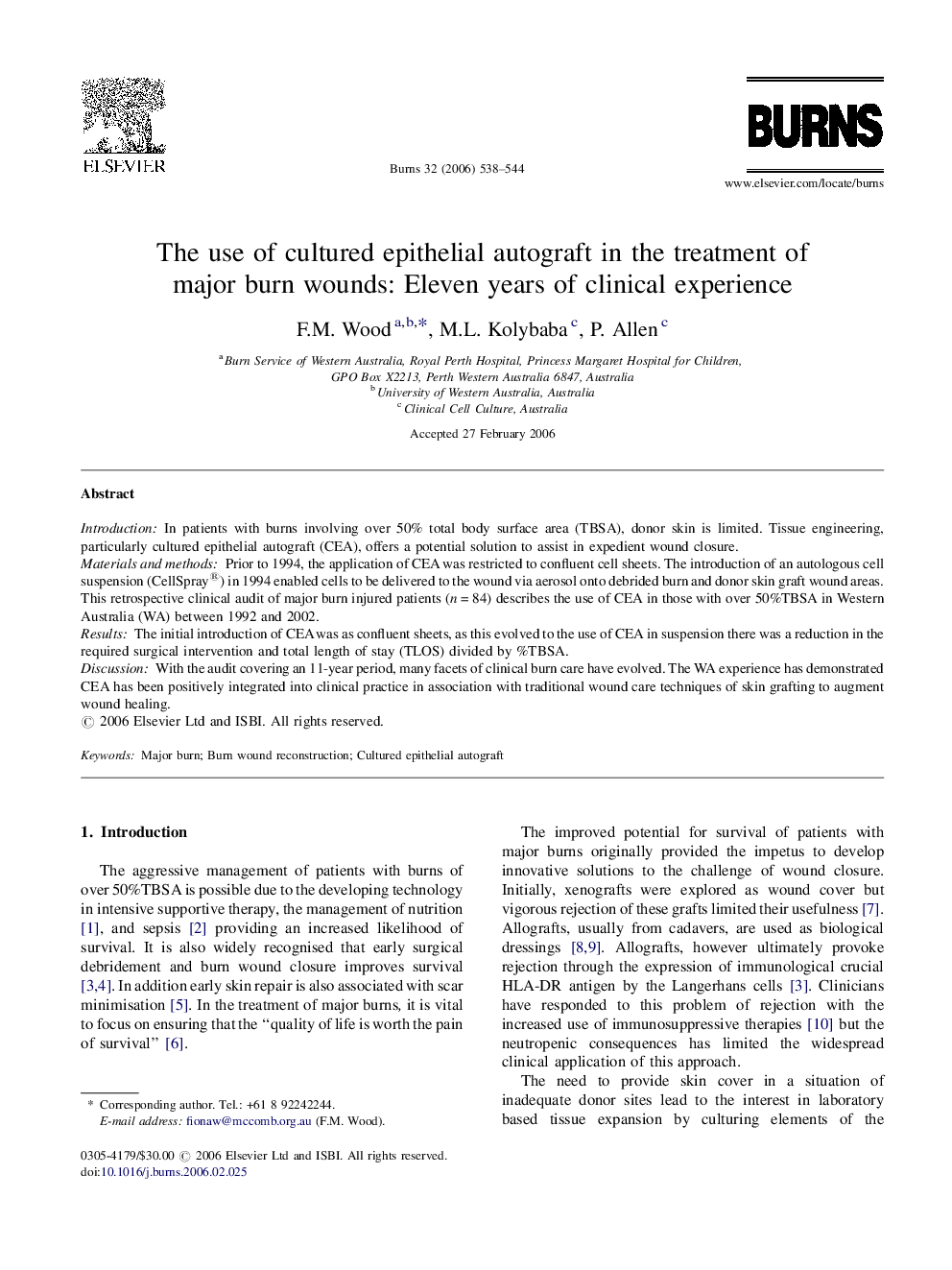| Article ID | Journal | Published Year | Pages | File Type |
|---|---|---|---|---|
| 3106871 | Burns | 2006 | 7 Pages |
IntroductionIn patients with burns involving over 50% total body surface area (TBSA), donor skin is limited. Tissue engineering, particularly cultured epithelial autograft (CEA), offers a potential solution to assist in expedient wound closure.Materials and methodsPrior to 1994, the application of CEA was restricted to confluent cell sheets. The introduction of an autologous cell suspension (CellSpray®) in 1994 enabled cells to be delivered to the wound via aerosol onto debrided burn and donor skin graft wound areas. This retrospective clinical audit of major burn injured patients (n = 84) describes the use of CEA in those with over 50%TBSA in Western Australia (WA) between 1992 and 2002.ResultsThe initial introduction of CEA was as confluent sheets, as this evolved to the use of CEA in suspension there was a reduction in the required surgical intervention and total length of stay (TLOS) divided by %TBSA.DiscussionWith the audit covering an 11-year period, many facets of clinical burn care have evolved. The WA experience has demonstrated CEA has been positively integrated into clinical practice in association with traditional wound care techniques of skin grafting to augment wound healing.
